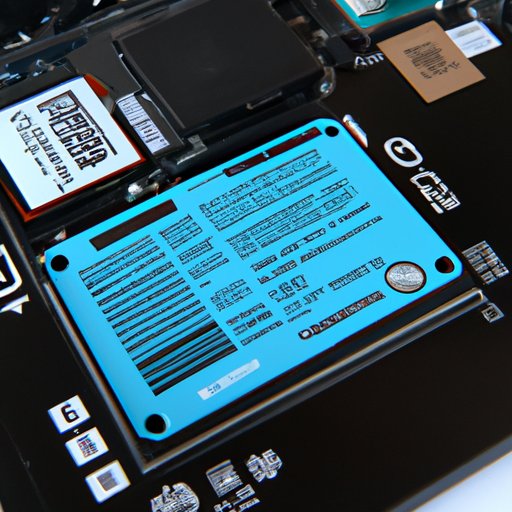
Introduction
As a Windows 10 user, understanding how to access the BIOS is essential, especially if you want to change the hardware settings of your device or troubleshoot some issues. BIOS, which stands for Basic Input/Output System, is a set of software code that controls your computer’s hardware directly. In this article, we will provide a step-by-step guide on how to get into BIOS in Windows 10, its menu layout, the essential settings to adjust, and common issues encountered when accessing it.
Mastering the Shortcut to BIOS in Windows 10: Your Step-by-Step Guide
The easiest way of getting into BIOS is via the shortcut keys, which boots your PC directly into the BIOS environment. Here are the simple steps to follow:
1. Firstly, you need to turn your computer off if it’s running.
2. Next, turn it back on and press the necessary keys simultaneously.
For most computers, those keys could be F2, F8, F12, Del, or Esc, depending on the manufacturer.
3. Release the keys after a few seconds, and your computer will boot into BIOS.
If the first method fails, you can also access BIOS through the Windows 10 settings menu. To do so, follow these steps:
1. Press the Windows + I keys simultaneously to open the Settings menu.
2. Click on “Update & Security.”
3. Click on “Recovery.”
4. Locate the “Advanced Startup” section and click on the “Restart Now” button.
5. After your computer restarts, click on “Troubleshoot.”
6. Select “Advanced Options.”
7. Click on “UEFI Firmware Settings.”
8. Finally, click on the “Restart” button.
Do’s and Don’ts When Navigating BIOS in Windows 10
When accessing BIOS, there are some key things you should do and others you should avoid to ensure the best outcome. These include:
Do:
– Enable your PC to “Fast Boot” to speed up the boot process.
– Configure the boot order to boot from your preferred drive first.
– Adjust the CPU and memory timings to achieve maximum performance.
Don’t:
– Change settings that you do not fully understand as doing so may cause system instability.
– Disable important security settings like password settings without proper knowledge of the consequences.
– Adjust hardware-related settings like fan settings, as it can impact the cooling of your PC.
Troubleshooting BIOS on Windows 10: Common Issues and Solutions
Sometimes, reaching BIOS in Windows 10 could be problematic, and this can be as a result of different reasons like incorrect BIOS settings, outdated motherboard firmware or corrupted system files, etc.
If you can’t access BIOS, try the following troubleshooting tips:
– Check that the necessary keys are pressed simultaneously
– Disable the “Fast startup” option in the power settings
– Update your motherboard’s firmware to the latest available version
– Repair the Windows 10 system files using the System File Checker tool(SFC)
Exploring the BIOS Menu: What You Need to Know
The BIOS menu is a comprehensive interface that controls all your computer’s hardware settings. Here are some of the common options you’ll find in the BIOS menu:
1. Boot – Allows you to change the boot order of your computer.
2. Security – Allows you to tweak settings such as passwords, Secure Boot, and TPM.
3. Advanced – Allows you to configure other hardware-related settings like CPU and memory timings.
4. Power Management – Allows you to manage power consumption and system cooling options.
5. Exit – Allows you to save and exit the changes you’ve made.
The Essential BIOS Settings for Windows 10: A Comprehensive Guide
Changing some BIOS settings can help improve your system performance, and here are some of the most important settings to tweak:
1. Boot Order- Change the boot order to prioritize your primary drive.
2. Fast Boot- Enable or disable this option to speed up the boot process.
3. C-State Control- Enable this option to reduce the power consumption of the PC.
4. Virtualization Support- Enable this option to use virtualization software on your PC.
Maximizing Your PC’s Performance with BIOS: Your Definitive Guide
Your hardware can achieve maximum performance by optimizing your BIOS settings. Here are some settings that can help:
1. Change CPU performance
2. Set PC to run cooler
3. Enable XMP Memory Profiles
4. Increase RAM Frequency
The settings mentioned above will help maximize your PC’s performance and give you better gaming or productivity experiences.
Conclusion
Getting into BIOS in Windows 10 is now a breeze, and with our guide, you’ll have better control over your computer’s hardware settings. Always be careful when tweaking settings and refer to your computer’s user manual if you’re unsure of anything. Lastly, make use of the different resources and tools provided to help you navigate the BIOS environment easier.




